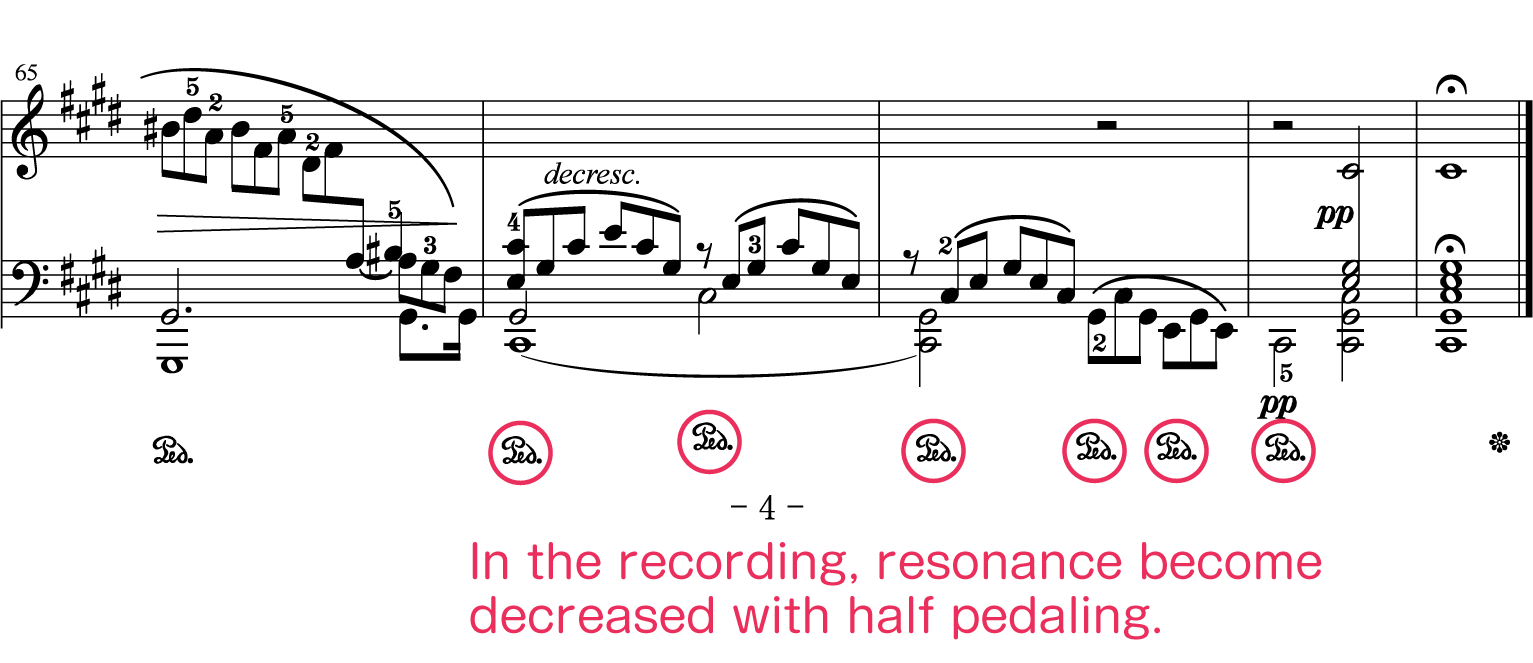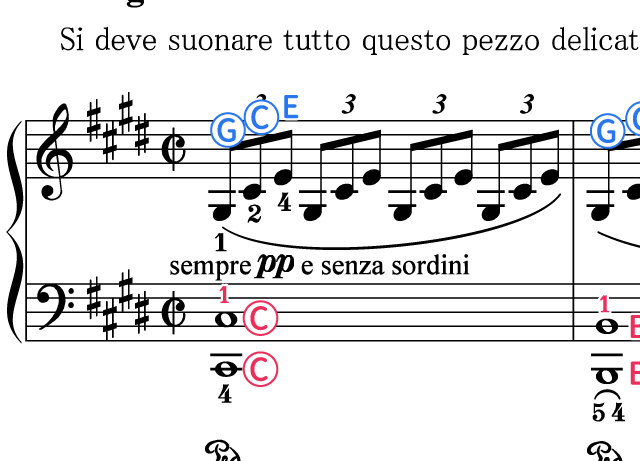How To Play (How To Practice)
- Level
- Part 1
- Make Music Expressive by Time Spacing in Harmony Progressions
- Fingering of the Left Hand as Bass
- Put the 16th Note into the Middle of the 8th.
- Shift Your Hand's Weight to the Pincky Finger and Focus Soprano.
- How To Play 9th Interval
- Dynamics of Bars 16 and 18
- Express of Inner Voice in the Bar 12 [Advanced]
- The 2nd Part - Coda
1. Level : 3(Normal 1)
This piece is a sonate. The tempo is slow, the notes is simple so it's easy for beginners.3
But it has some octaves, it's hard for small children.
Soft voice continues throughout almost the whole piece. So you need some techniques to control the dynamics for beautiful playing.
2. Part 1
1. Make Music Expressive by Time Spacing in Harmony Progressions
Time spacing is to control timing of change of harmony by staying in the chord for a while.
Appropriate spacing of time makes music remarkably expressive.
This piece doesn't require advanced techniques, so you can try it even if you're a beginner!!

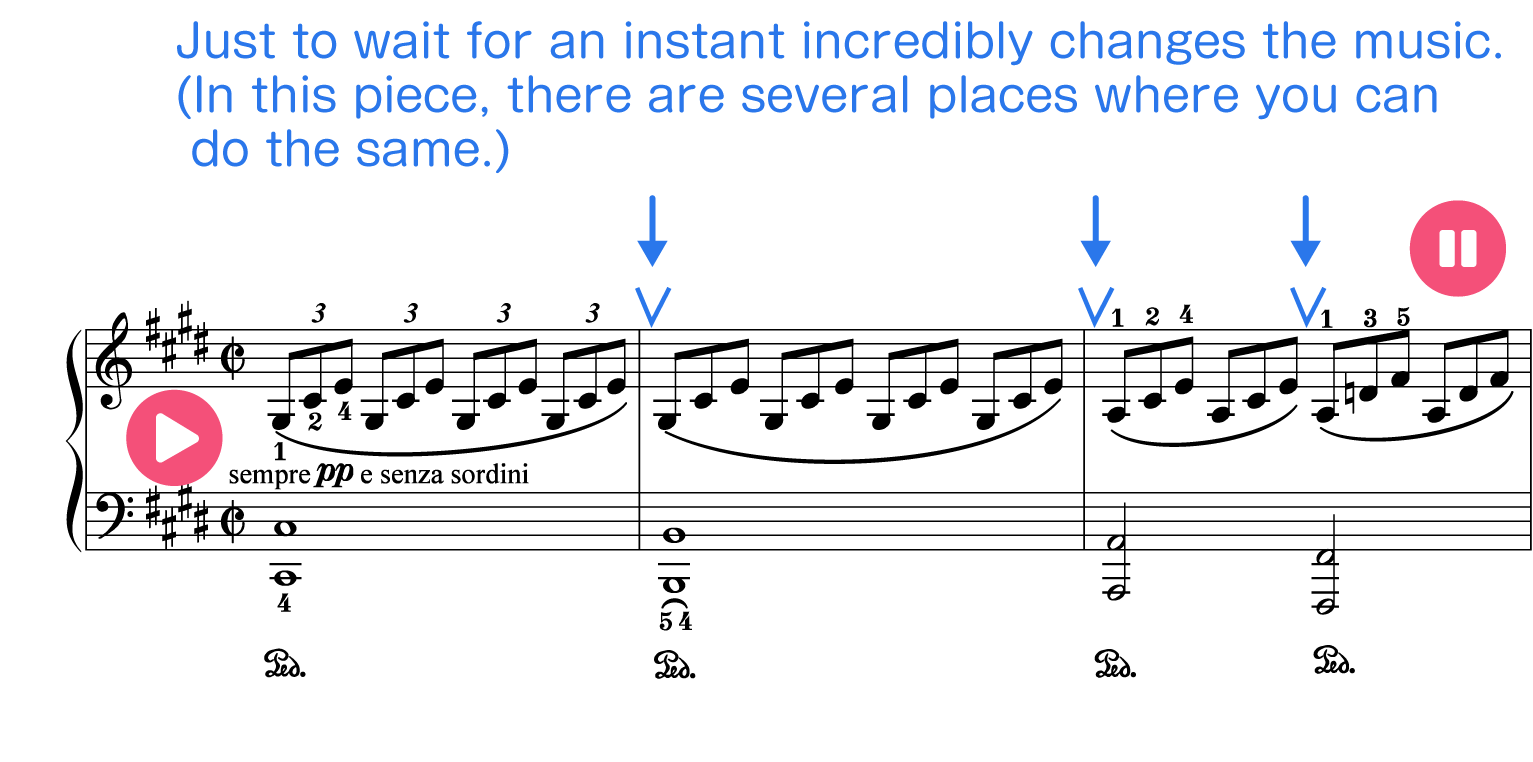
If the space of time is too long, musical flowing will stagnate, if too short, it'll be too plain.
So you should find "Appropriate" timing.
Refering to the recording, feel and master spacing of time.
2. Fingering of the Left Hand as Bass
Fingering of the left hand in the sheet aims legato so you should find "4th finger on the black key" and "the finger changing on the same key".
But you can legato with the pedal, so there is no problem with you using 5th finger on all the notes of bass.

Especially for beginners, using the 5th on all the notes is recommended because is is easy.
1. Don't Accent Unnecessarily of the 5th Finger.
If you use the 5th on all the notes of bass, you need to be careful of unnecessary accent by up and down of your wrist.
The fingering of using both the 4th and the 5th lets your hand move more smoothly and calmly. So try and decide as you like.

3. Put the 16th Note into the Middle of the 8th.
The 16th note of the second note in (G#-G#G#-) is not sextuplet, but you can put it into the middle of 8th note triplet like sextuplet.

4. Shift Your Hand's Weight to the Pincky Finger and Focus Soprano.
You should focus the melody by the pincky finger and relieve the lower keys as inner voice.
It can be done with ease by shifting your hand's weight to a side of the pincky finger.
Basically, it is to support your hand's weight on the pincky finger. And then your wrist is a little bit higher than usual.
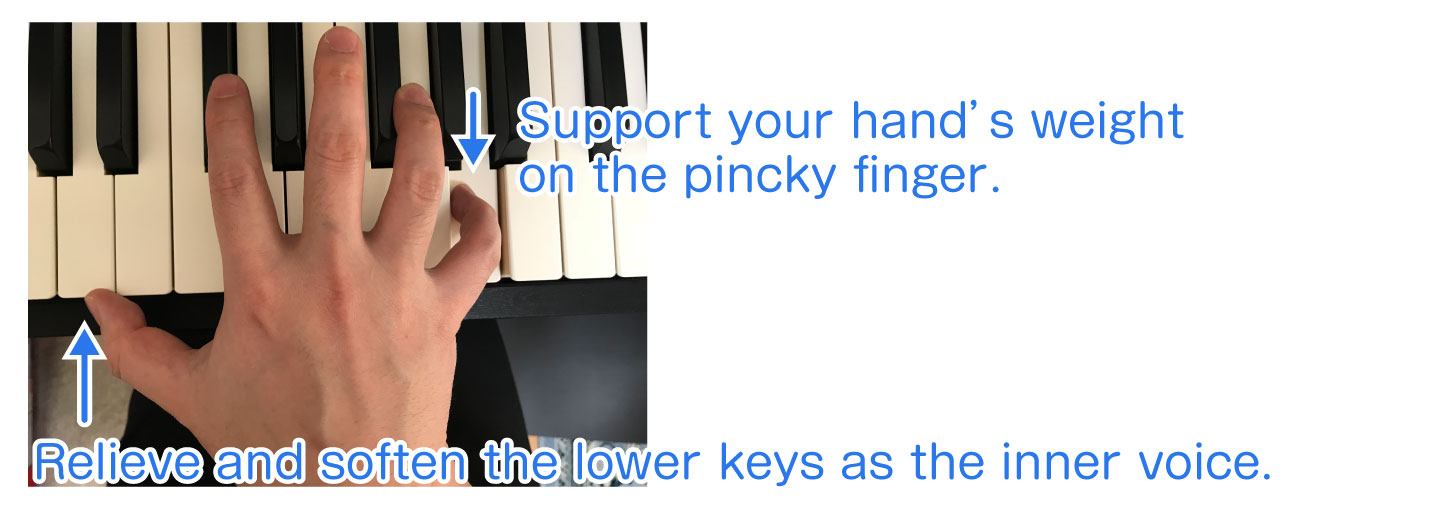
Especially on G# of the 16th note in the melody(G#-G#G#-), you should relieve your thumb and shift your hand's weight to the right side.
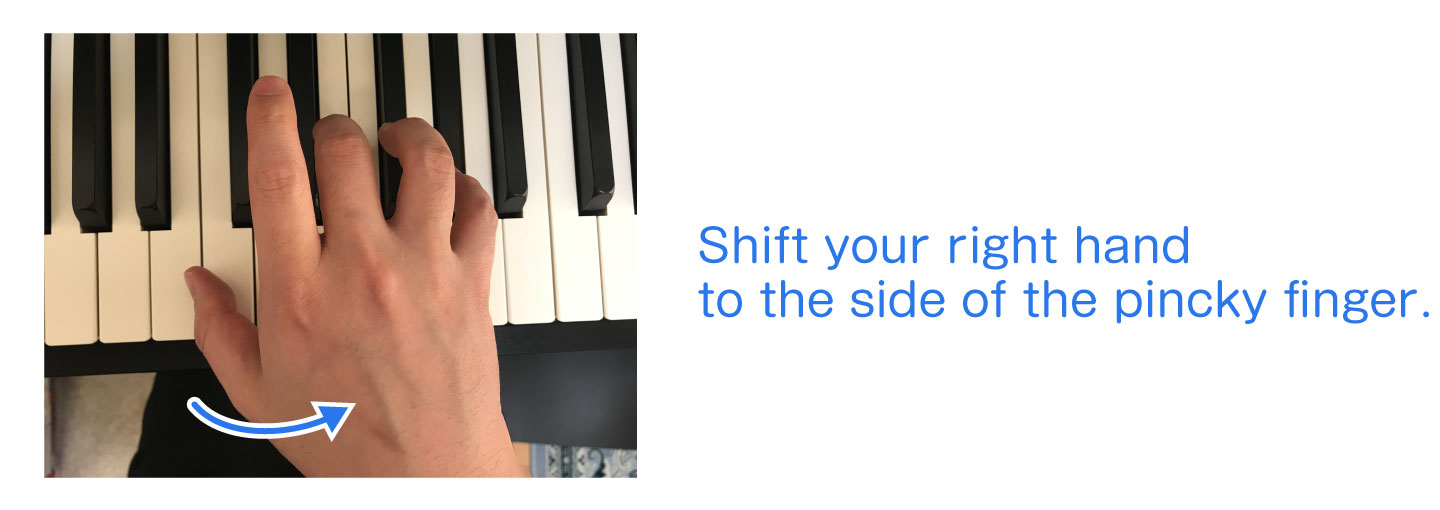
5. How To Play 9th Interval
For its width, it is difficult to play 9th interval(A and higher B) in the bar 8.
If you can't play 9th interval at the same time, there are two ways.
The first one that we recommend is to play note A by the left hand.
The other one is to postpone the note B. In this way, you play the note B right after the note A.
But the time lag might disturb the tempo because this whole piece is dominated by the sustained triplets.
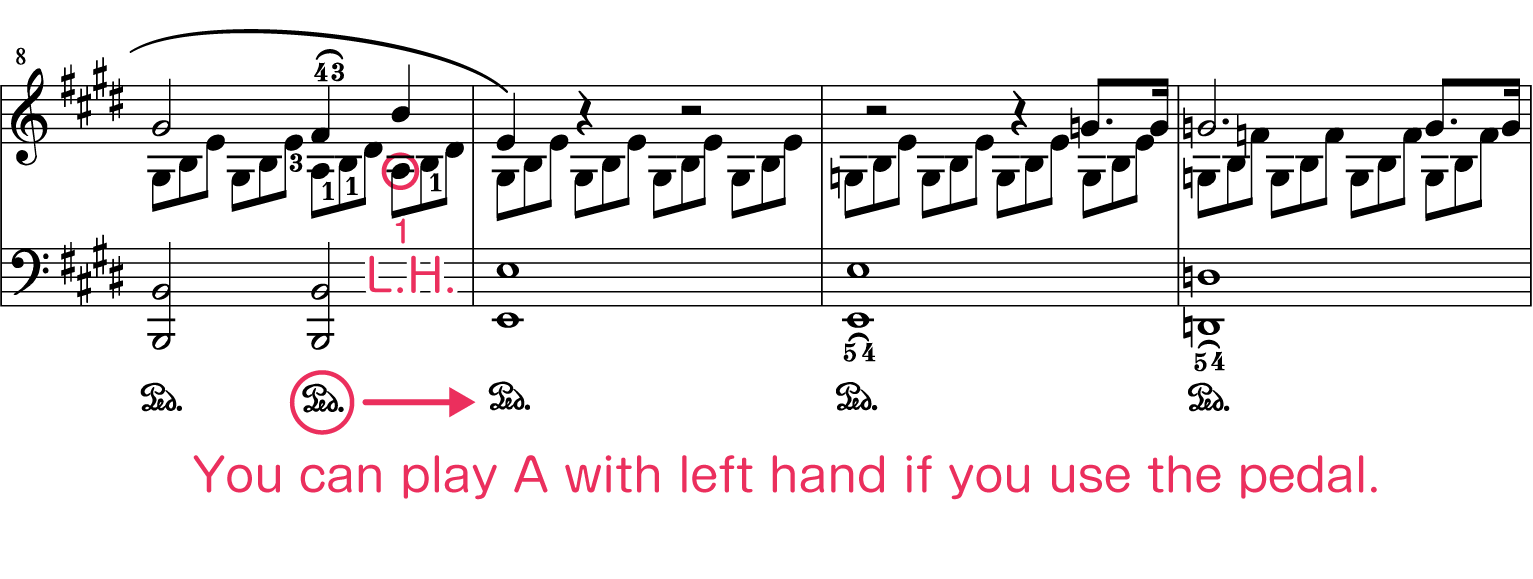
6. Dynamics of Bars 16 and 18
Both 16 and 18 bars have the sign of crescendo and diminuendo. Express dynamics by soprano and bass. And you should maintain quiet of the inner voice.
Bass of the bar 18 for the second time is more emphasized in our recording. Small changes like this attracts listeners.


7. Express of Inner Voice in the Bar 12 [Advanced]
When the inner voice changes, expressing that is preferred.
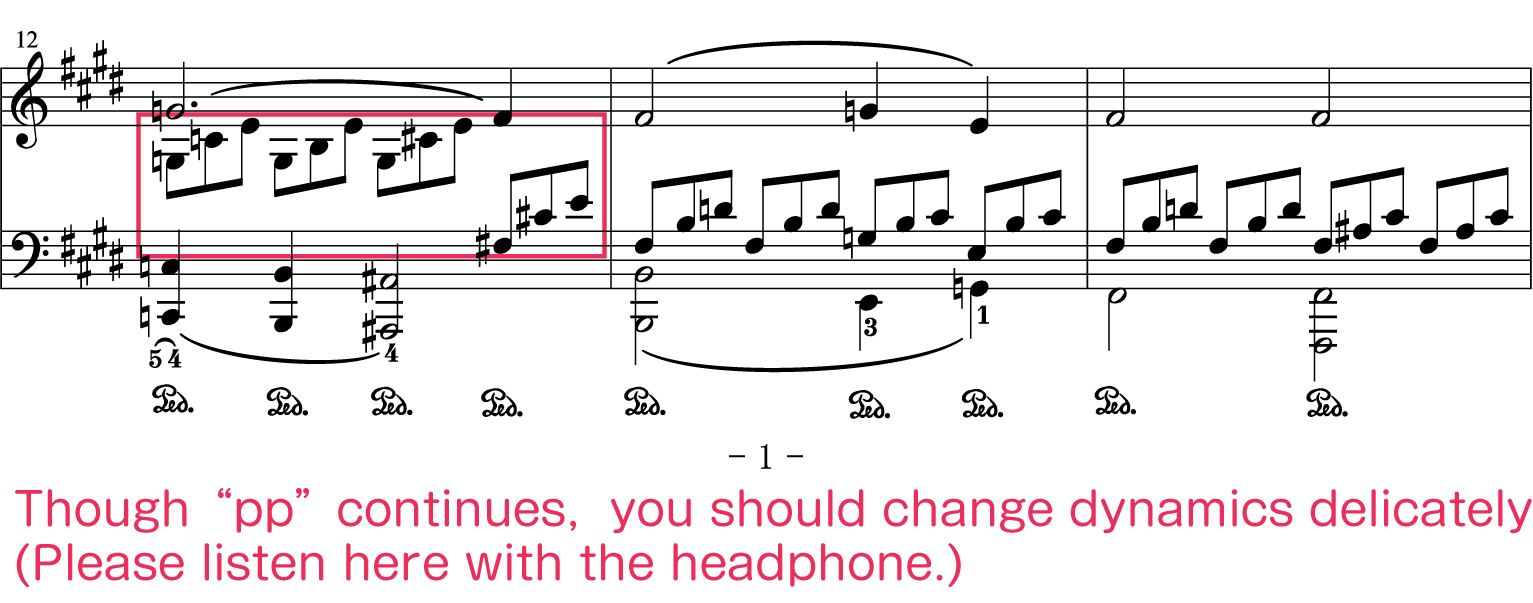
3. The 2nd Part - Coda
1. Attractive Change of the Repeated Theme
When the same theme is repeated, a small change makes music attractive.
Specifically, when you slightly soften the melody, you can bring the feeling that the melody comes from afar.


2. How to Play Long and the Complicated Cadence
If you can play without looking at the key board, there is no problem. If you can't, this part is difficult.
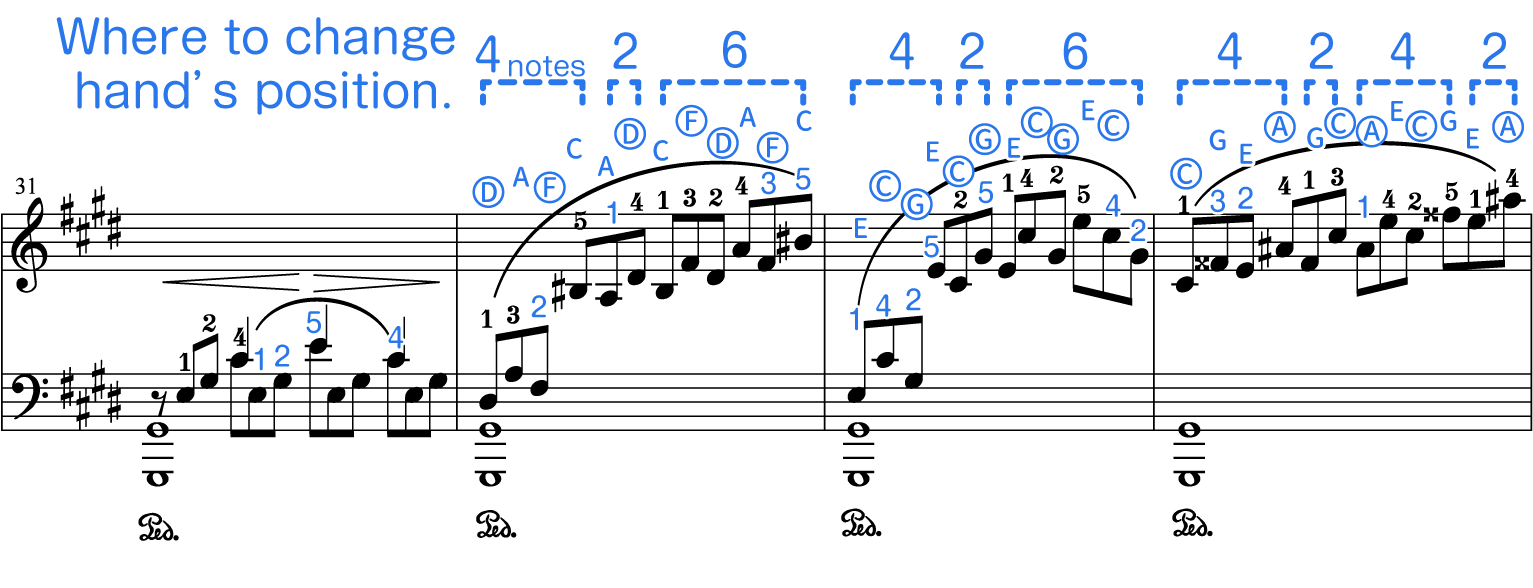
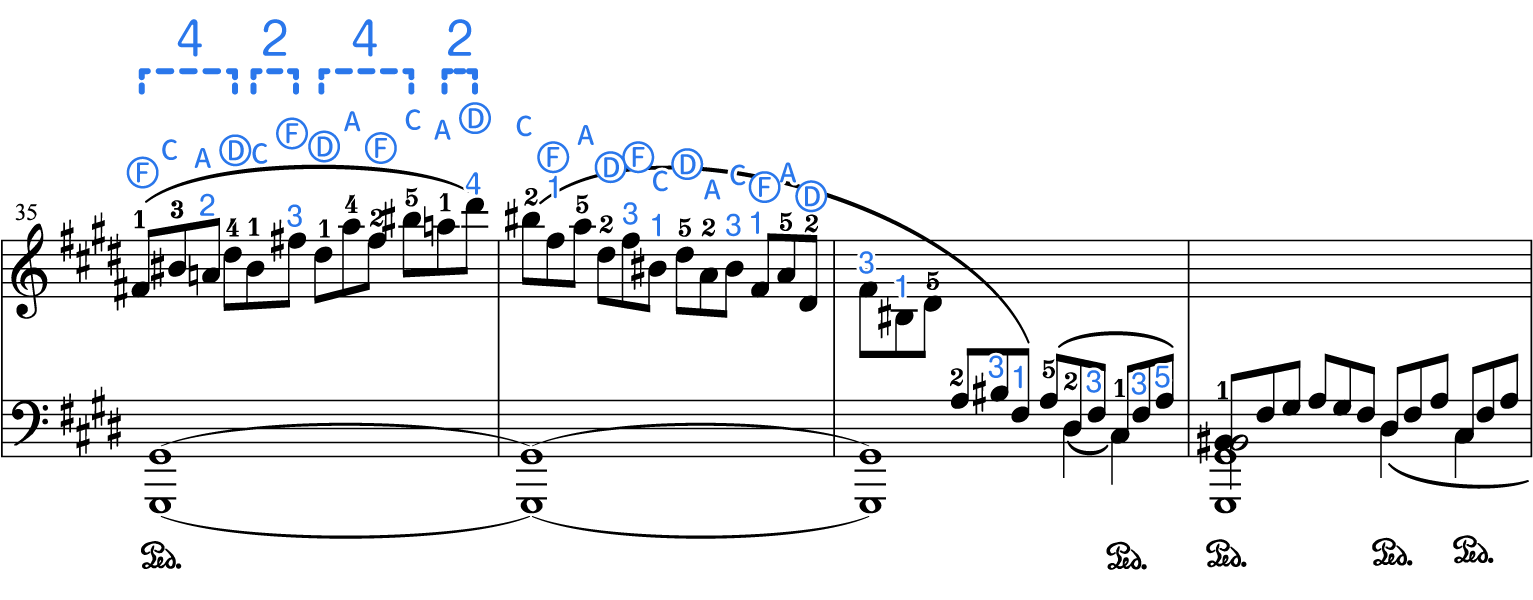
If you read and play every note, you hardly memorize it.
In this cadence, each bar has each chord.
So firstly you should memorize the key names of the chord of every bar.
And it is also effective to memorize the intervals.
(In this page, F## is written as G.)
A key to progress is to practice dividing into small parts, slowly and correctly. It is not to practice the whole piece, fastly, with mistakes.
Memorizing the fingering is hard. But here is a simple solution.
You only have to memorize the numbers (426)(426)(4242)(4242).
The numbers are the timing when you move your hand. Basically, you play 4 notes, you move your hand, and play 2 notes, and so on.
In this way, you don't forget the fingering.
Of course you can choose another fingering, but it is important to fix the fingering.
3. Attractive Change Of the Repeated Theme 2
Here is one of the most emotional part.
In our recording, Dynamics of this part in part 3 is reversed to that of part 1.


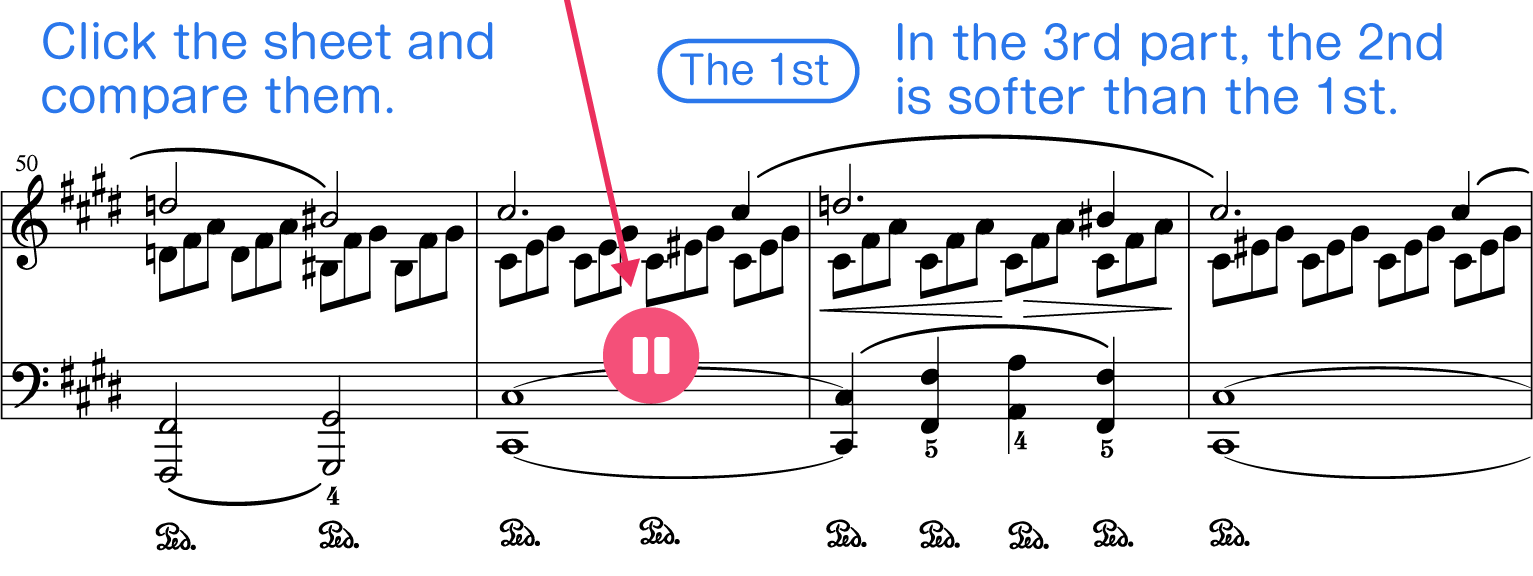

4. Soft Resonance With Half Pedaling [Advanced]
Half pedaling is to pedal the sustain pedal incompletely.
For trial,first, pedal it completely and lift your foot little by little.
You will hear harmony of soft resonance.
In this part, with half pedaling, you can decrease resonance to the end. And half pedaling may be also effective at other various situations.
